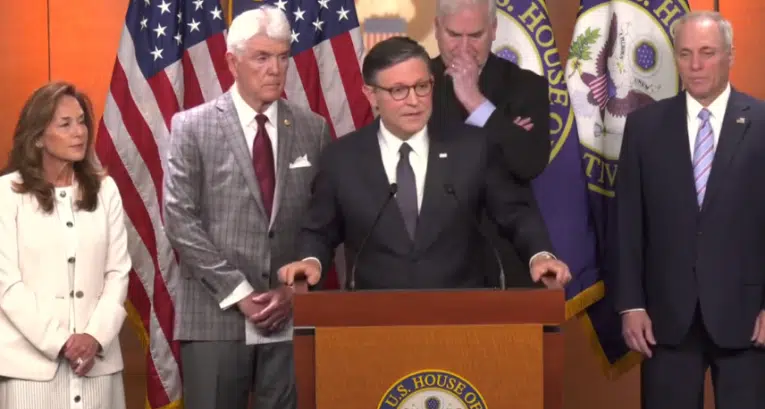By Marita Noon
 The Supreme Court has been harsh on the Obama Administration’s regulatory overreach (remember Hobby Lobby and the National Labor Relations Board vs. Noel Canning decision), and this week’s decision on mercury and air toxics standards for power plants — known as the MATS regulations — serves as a severe smack down and has the potential to impact future regulations like the Clean Power Plan (CPP), which is even more far-reaching and costly than MATS. Addressing CPP, American Electric Power President and CEO Charles Patton sees that the ruling “provides the basis for future litigation.”
The Supreme Court has been harsh on the Obama Administration’s regulatory overreach (remember Hobby Lobby and the National Labor Relations Board vs. Noel Canning decision), and this week’s decision on mercury and air toxics standards for power plants — known as the MATS regulations — serves as a severe smack down and has the potential to impact future regulations like the Clean Power Plan (CPP), which is even more far-reaching and costly than MATS. Addressing CPP, American Electric Power President and CEO Charles Patton sees that the ruling “provides the basis for future litigation.”
(A multi-state coalition tried to stop the proposed CPP in federal court; however, the court dismissed the case June 9, saying the challenge is premature because the rule hasn’t been finalized.)
Bill Raney, President of the West Virginia Coal Association was happy with the Supreme Court’s decision: “The ruling is a positive, clearly better than a negative position.” Addressing the ruling’s impact on the upcoming CPP final rule, scheduled for release this summer, he added, “They’re going to have to do economic analysis. And, there’s no available technology to meet the CO2 standards they want.” Many believe the newly required economic analysis will have to delay the release of the final rule and may require new public hearings.
Unfortunately, the justices’ decision comes after much of the electricity-generation industry has started costly moves toward meeting the regulation. The Environmental Protection Agency (EPA) has essentially responded with a shrug. In a statement, EPA spokeswoman Melissa Harrison said, “This rule was issued more than three years ago, investments have been made, and most plants are already well on their way to compliance.” Patton is pleased with the decision, but is not over-the-top with enthusiasm as his company, to comply with the regulation, has already engaged in closures, conversions, and retrofits — “all at a cost,” he explained, “that will be borne by consumers.”
In his response, Senator James Inhofe (R-Okla.) stated, “While the ruling is certainly a victory, EPA even acknowledges the negative economic costs that have already occurred including the premature closure of coal plants and thousands of lost jobs. EPA’s actions have far-reaching consequences, even when they are the result of unauthorized actions. The Courts must keep this in mind as the agency approaches finalization of its so-called Clean Power Plan.”
That’s right, just introducing the regulation, forced expensive modifications and premature power plant closures — meaning increased rates for consumers and thousands of lost jobs.
The big lesson for the Obama Administration should be read between the lines. They may be, in some back room at the White House, rubbing their hands in glee over the court’s EPA decision. The Administration can introduce all kinds of controversial and unreasonable rules and regulations that crush growth, kill jobs, and favor its friends and ideology. And even if they, ultimately, get shot down, it will be too late; the impact will already be felt.
“The tragedy of it all is when the EPA fails to fully contemplate the economic cost of their proposals,” Patton added. “We don’t see any opportunity to bring these plants back. Sometimes you can’t turn that aircraft carrier back; you cannot put the toothpaste back in the tube.”
Before more aggressive, expensive policy, like the CPP, is finalized and wends its way through the appeal process, something must be done to blunt the impact of announced rules. Patton agrees, “Let’s have a definite solution, a set of rules that are un-appealable before we spend billions of dollars.”
Fortunately, as Justice Antonin Scalia admonished in last year’s UARG v. EPA decision, Congress is working on such legislation. The bipartisan Ratepayer Protection Act passed the House on June 24 and is headed to the Senate. The legislation allows states to delay compliance with, for example, CPP, until all legal challenges have been exhausted.
In the Senate, Shelley Moore Capito (R-W.Va.) and a bipartisan group of Senators has introduced the Affordable Reliable Energy Now Act (ARENA) that would go much further than the House-passed bill by immediately killing off pending carbon pollution rules and setting even stricter requirements for the EPA to meet if it elects to try again on regulating carbon dioxide emissions from power plants.
The court’s decision should also encourage more governors to refuse to comply with the administration’s CPP. Encouraged by Senator Mitch McConnell (R-Ky.), several states have announced that they will not draft their own compliance plan as required by CPP.
In April, Governor Mary Fallin (R) signed Executive Order 2015-22 declaring that the state will not develop a plan to implement the CPP. The order prohibits Oklahoma’s environmental agencies from developing an implementation plan unless it is determined to be legally required by the Attorney General of Oklahoma or a court of competent jurisdiction.
Texas Governor Gregg Abbott (R) flew to Washington, D.C., to meet with McConnell. He called CPP: “unprecedented meddling with Texas in order to push the Obama Administration’s liberal climate change agenda.” Two different pieces of legislation with intent similar to Oklahoma’s order have been filed in Texas.
On May 21, Wisconsin Governor Scott Walker sent a letter to President Obama in which he called CPP “unworkable” and stated, “Compliance with the rule could cost Wisconsin as much as $13.4 billion and raise electricity rates in the state by 29 percent.” Walker says, “Wisconsin will not comply with the president’s plan without ‘significant and meaningful changes.’”
Last week, Indiana’s Governor Mike Pence (R) sent a letter to President Obama stating that his state will not comply unless major changes are made to CPP. In West Virginia, lawmakers sent a letter to Governor Earl Ray Tomblin (D) urging him not to submit a compliance plan. Up to twenty states are expected to forgo developing their own implementation plans, though the number could be higher. Real Clear Policy reports, “According to one survey, there are today 32 states ‘in which elected officials (e.g., legislatures, governors, and/or attorneys general) have expressed firm opposition’ to the CPP.”
Monday’s Supreme Court decision is worth celebrating — if for no other reason than that the anti-fossil fuel movement isn’t celebrating. While the decision may be too late to save the money spent and the jobs lost due to MATS, it does put the brakes on the EPA’s headlong rush to minimize hydrocarbon fuel sources without due consideration of the real costs to American families and our industries.
Experts believe that this decision will impact all pending rules and regulations, setting a new course toward a rational, measured approach to energy issues. We need to seize this momentum shift by voicing support for ARENA and encouraging state leaders in resisting EPA’s draconian edicts while leaving environmental protection to the states.
(Author’s note: Thanks to Coleman Alderson, author of Mountain Whispers, Days without Sun, and purveyor of LittleRedPill.com for access to the content of his interviews with Charles Patton and Bill Raney.)
The author of Energy Freedom, Marita Noon serves as the executive director for Energy Makes America Great Inc. and the companion educational organization, the Citizens’ Alliance for Responsible Energy (CARE). She hosts a weekly radio program, “America’s Voice for Energy”—which expands on the content of her weekly column.





